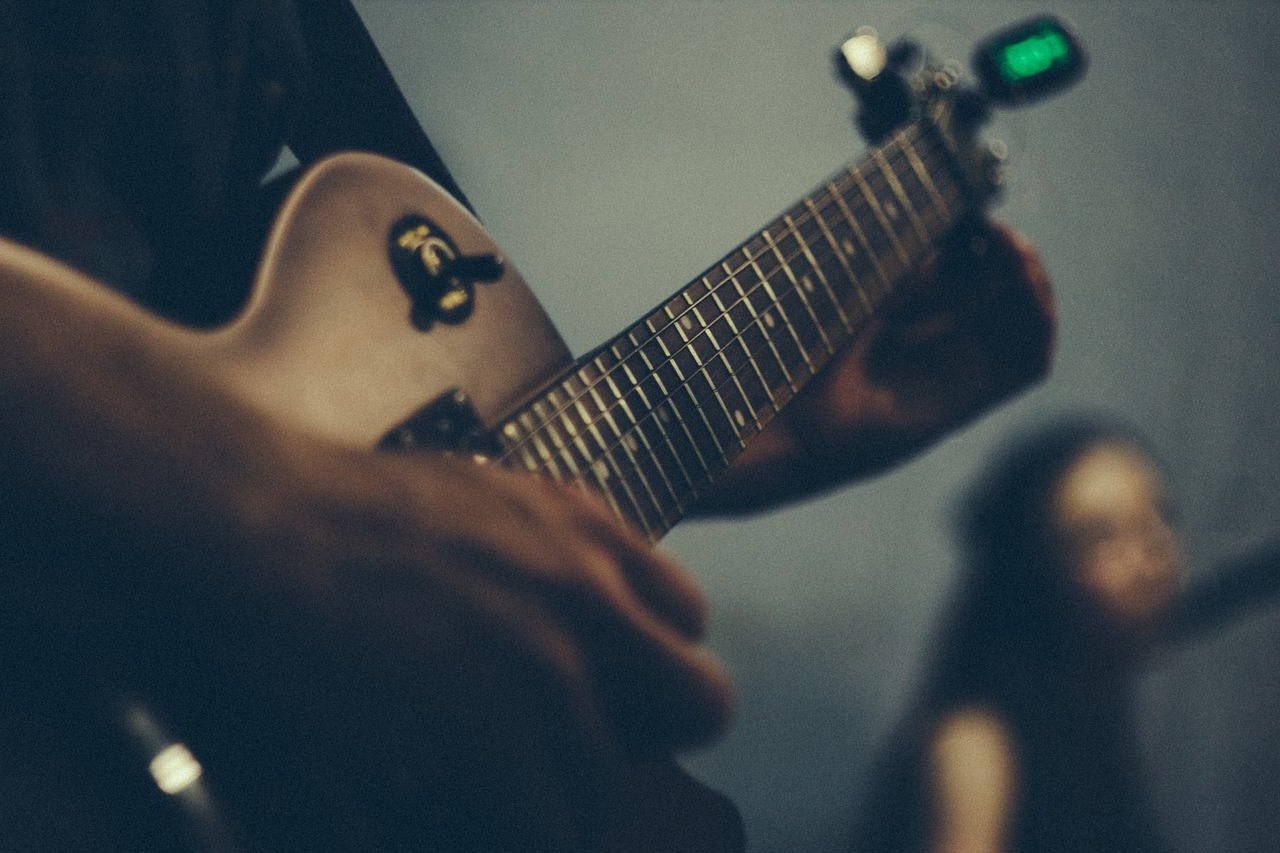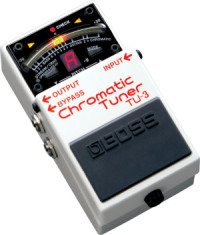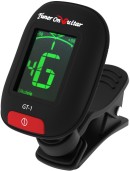
If you’re performing live, you’re definitely going to need some form of a tuner. I’ve come across semi-professional musicians who don’t use one and rely solely on their ears for tuning up. This is the wrong approach, as a good tuner will ensure that your guitar is perfectly in pitch with the other instruments in the band.
A guitar that’s perfectly in tune will contribute to peoples idea of good tone. Therefore if you’re playing live or even practicing, tuning should be commonplace. One of my favorite tuners is the Boss TU-3 or TU-2. It’s used by countless of players and is found in the pedalboard of almost every professional.
Most good tuners will include a mute function, which means that your guitar signal will be muted through your amp when the pedal is engaged. Don’t make the mistake of letting the audience hear you tune (unless their attention is diverted elsewhere) as this will come across as being amateur.
As for acoustic guitars, you may find a clip on tuner to work very well. I always keep one of these on hand in case my tuning pedal fails on me. I do, however, find good tuners like the Boss-TU3 to be more accurate than the clip-on tuners.
I usually tune up once before every show. I use a high quality guitar to ensure that my guitar stays in tune. I find that my guitar rarely (if ever) loses tuning, so tuning only once is generally all that’s required. Tuning can usually be a bit of a hassle with inexpensive instruments, so I would suggest using a guitar that’s at least $300 with a good setup if you want to save on time. If your guitar has a tremolo system, you may want to consider applying some Big Bends Nut Sauce in the groove of the nut. This is the same product that great players like Joe Satriani use to keep their guitars in tune with their extreme whammy bar pyrotechnics.
If you find that you’re going out of tune regularly, you may also want to consider readjusting your playing technique. Bashing away at your strings with your picking hand is a sure-fire way to knock your guitar out of tune.
There is a consensus that guitars should be acclimatized to their environment about 30 minutes before each gig. Different weather conditions can have an effect on your guitar and strings, so it will take the instrument some time to stabilize. It’s a good idea to place your guitar on stage on its stand well before the gig starts. Generally I don’t worry too much about doing this. As I have already stated, a high quality instrument like a Gibson Les Paul will make a world of difference.
In terms of using multiple tunings for live gigs, my advice would be to make use of an extra guitar for each additional tuning. Retuning between songs can take up unnecessary time, and unless executed in a clever manner may seem unprofessional to your audience. I always try and stick to only 1 tuning for the entire show, as I have found both retuning and changing guitars to be cumbersome. Unless you have a dedicated guitar technician that can assist you with swapping your instrument, it will interrupt the flow of your show (at least in my experience for the way I like to perform).
Also, don’t forget to replace your strings on a regular basis. Old strings are prone to losing their tuning very quickly, while new strings can be very forgiving. New strings will also have added clarity and brightness that will complement your tone in a positive way.
Finally, I would like to touch on the fact that when tuning your instrument you should always tune up to a note and not down. Tuning down will loosen the string winding, and as a result your guitar will be more susceptible to loosing its tune.


